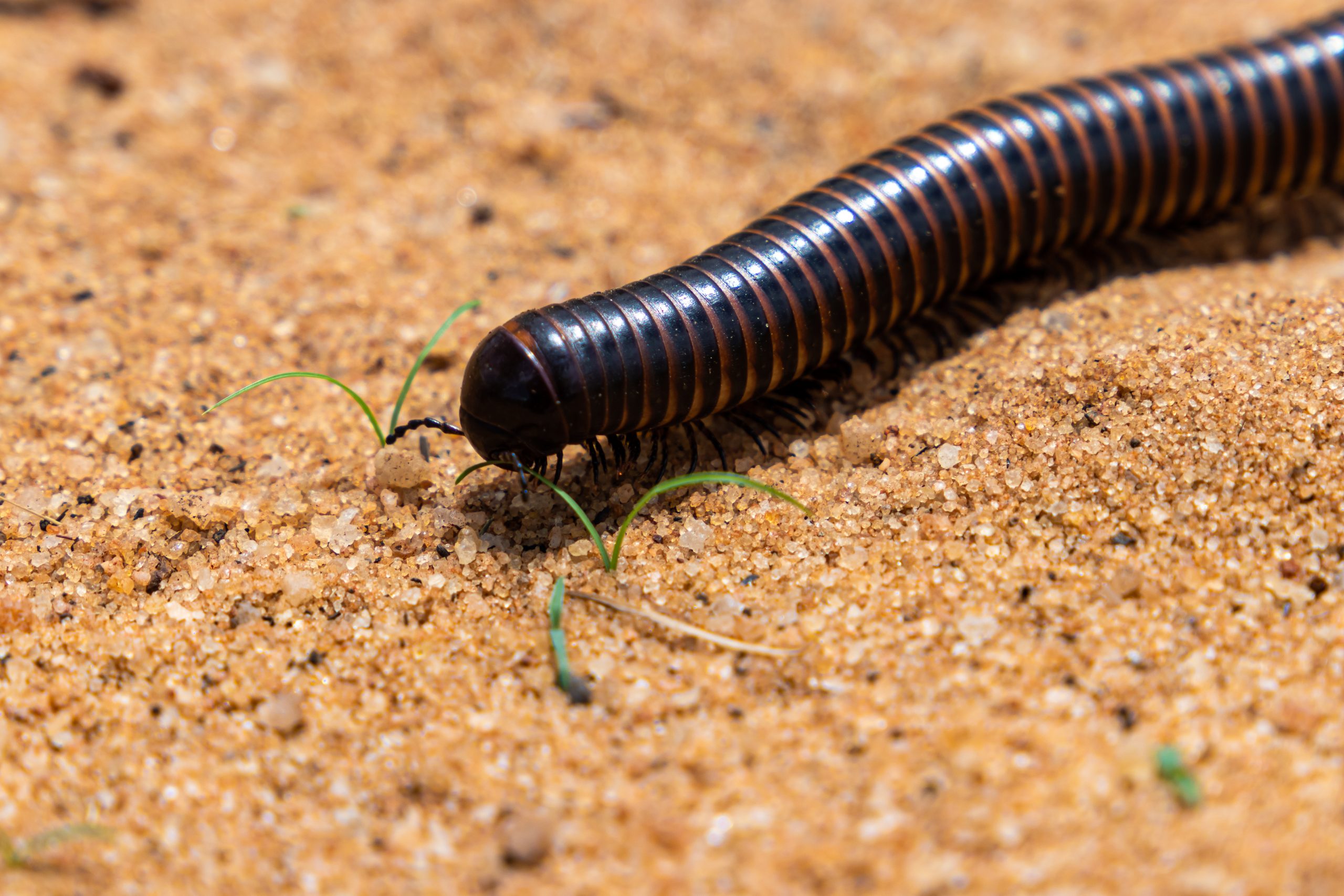Centipedes and Millipedes in Las Vegas — What You Should Know and How to Control Them


How to Control Centipedes & Millipedes at Home
Centipedes and millipedes aren’t insects but arthropods known for their many legs. In the Las Vegas valley, these creatures occasionally wander into homes. While they can look alarming, both groups are mostly harmless and even beneficial. Millipedes feed on decaying plant matter, helping to recycle nutrients, and centipedes hunt insects such as flies and cockroaches. Still, large migrations or damp basements can lead to unwelcome encounters. Here’s how to identify these “many‑legged” visitors and keep them out of your living space.
Centipedes vs. Millipedes: Know the Difference
- Millipedes: These cylindrical or slightly flattened creatures have long, segmented bodies with two pairs of legs on most segments. Millipedes move with a smooth, rippling motion and curl into a coil when disturbed. They range in size from less than an inch to more than four inches, and many species have brown bodies with lighter stripes. Millipedes feed on decaying plant material and play a beneficial role in breaking down leaf litter. When conditions become too wet, dry, hot or cold, they may migrate in large numbers.
- Centipedes: These flattened, elongate animals have one pair of legs per body segment. Their antennae are longer than those of millipedes, and their first pair of legs are modified into venomous fangs used to kill prey. Most centipedes are reddish‑brown and under four inches long, but the common house centipede is bluish gray with extremely long legs. Centipedes are predatory and beneficial because they eat spiders and other household pests. Large centipedes (4–5 inches) can inflict a bite comparable to a bee sting.
Life Cycles & Habits
Millipedes lay eggs in soil under decaying plant material; larvae hatch with few legs and add segments and legs as they grow, taking up to two years to reach maturity. Adults may live several years. Centipedes place eggs in moist soil; some species add segments as they molt, maturing in two to three years and sometimes living as long as six years.
Both centipedes and millipedes seek moisture. Outdoors, they hide under stones, logs, mulch, and leaf litter. Indoors they are often found in damp basements, bathrooms or crawl spaces. Millipedes curl up and die quickly in dry indoor environments. House centipedes prefer cool, damp places and can survive longer indoors because they feed on other pests.
Are They Dangerous?
Millipedes do not bite. Some species may release a defensive liquid that irritates skin or eyes. Centipedes rarely bite humans; the common house centipede is harmless, while larger species may cause localized swelling and numbness. In homes, the main complaint is the “creep factor” when these arthropods appear unexpectedly.
Why They Invade Homes
In Las Vegas, irrigation systems, leaky pipes and over‑mulched landscapes create moist habitats that attract millipedes and centipedes. Heavy rain followed by drought can trigger migration. Home foundations with abundant organic matter, such as composted soils or grass clippings, provide ideal conditions for millipedes. Centipedes follow their prey indoors, so infestations may indicate a larger insect problem.
Prevention & Centipede and Millipede Control
Sanitation & Exclusion
- Remove vegetation, rotting wood and organic debris from around the foundation.
- Minimize moisture near the house by fixing leaks and improving drainage.
- Caulk cracks and gaps around doors, basement windows and other openings.
- Keep basements, crawl spaces and bathrooms well ventilated to reduce humidity.
Outdoor Management
- If millipede populations persist, apply a pesticide labeled for millipedes or centipedes around the building foundation in a 3‑foot strip; follow all label directions.
- Treat lawn edges near wooded areas if necessary and reapply after heavy rain.
- During mass migrations, locate the source (often grassy or wooded areas) and apply targeted contact treatments at night.
Indoor Management
- Use a vacuum or broom to remove wandering centipedes or millipedes and release them outside.
- Apply ready‑to‑use aerosol sprays containing pyrethrins or pyrethroids to cracks, crevices and entry points.
- Control other household insects to reduce the food supply for centipedes.
- Insecticides are rarely necessary and should be used only when other measures fail.
Garden & Lawn Tips
- Reduce mulch thickness and avoid over‑watering; dry mulch discourages millipedes.
- Keep landscape plants trimmed and lawns mowed; remove leaf litter and grass clippings.
Centipedes and millipedes play important roles in the ecosystem, but their presence in your home can be unsettling. By reducing moisture, removing decaying organic matter and sealing entry points, you can keep these many‑legged visitors outside. When large migrations occur or infestations persist, call Desert Squad Pest & Wildlife at 702-907-9453. Our technicians will identify the species, pinpoint moisture issues, and implement targeted, eco‑friendly treatments to restore your peace of mind. Contact us today for a free inspection!
WE’RE PROMPT
Need same day service? Call us at 702-907-9453 before 12:00 PM, Monday through Friday!
WE’RE PROFESSIONAL
We know you’re putting a lot of trust in our hands. Our team is highly trained and trustworthy.
WE’RE PARENTS, TOO
We do our work in a way that ensures your family is kept safe before, during, and after service.

